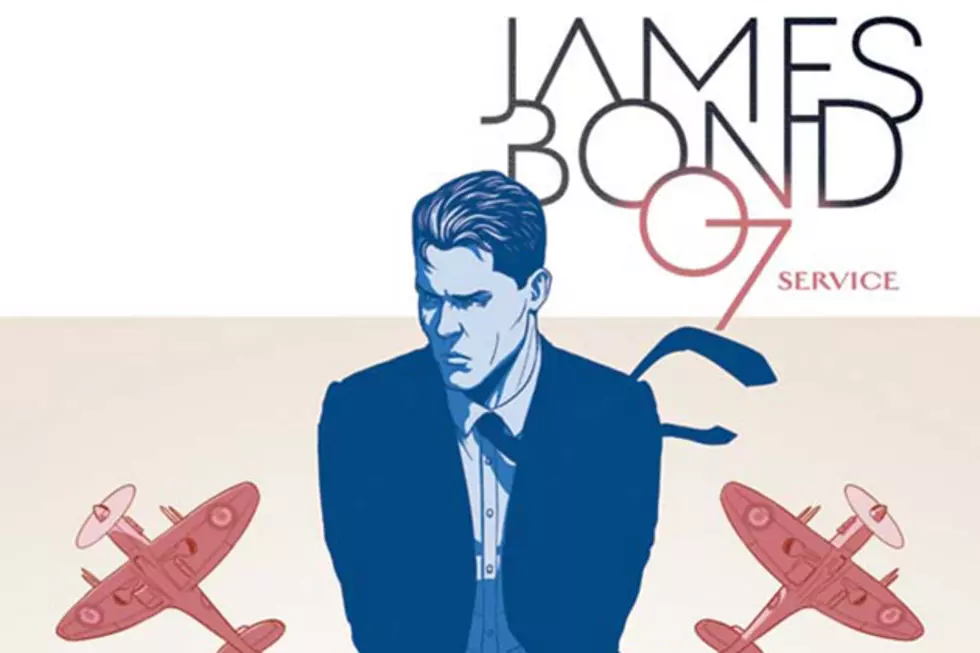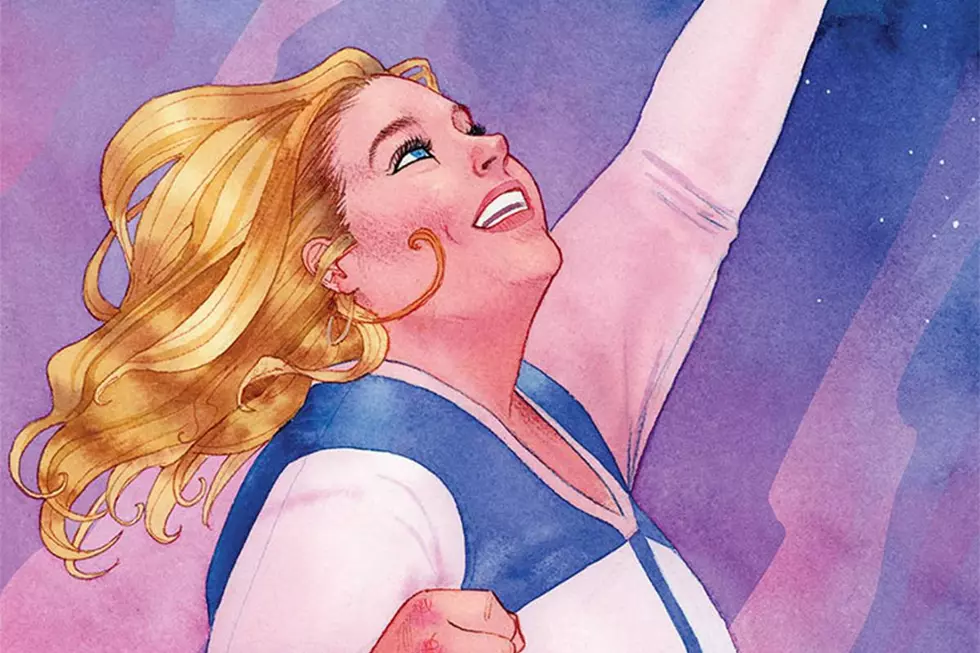
57 Years Ago: Superspy James Bond Made His Comics Debut
On this day in 1958, the world’s most famous MI6 Agent took to the world of comics for the first time, as Ian Fleming’s James Bond brought his hard-drinking, womanizing, spy-killing adventures to the pages of UK newspaper The Daily Express just five years after the launch of the novels with Casino Royale.
Fleming worked in the Naval Intelligence Division during the Second World War, and created his character as a composite of several of the commandos and spies who passed through his base during the time. Although the agent became world famous in 1962 when actor Sean Connery took on the role for the first in a series of movies, Dr No, the comic strip actually precedes those stories by four years.
With no visual model to work from, artist John McLusky was commissioned by Fleming to provide the first image of Bond. Not struck by Fleming’s descriptions of the character as resembling dapper bandleader Hoagy Carmicheal, McLusky made him bigger and tougher than Fleming intended, providing a harder edge and less refinement --- arguably prefiguring Connery's cinematic take on the character.
Henry Gammidge provided most of the scripts for the adaptations, beginning with Casino Royale, and the strips proved popular enough to merit a continuing series of tight interpretations of the novels, racing through 1000 installments and eleven stories before Fleming’s death in 1964.
Fleming's death came around the same time that artist Yaroslav Horak replaced McLusky as series artist, and Horak adapted the last remaining Fleming novels before going on to create twenty new adventures for the spy alongside Gammidge and other writers.
Although the UK newspaper strips continued well into the 80s, the Bond comics license was also popular in other countries. Takao Saito loosely adapted four Bond stories for the Japanese market in the 60s, and James Bond comics were an enduring favorite across mainland Europe.
The first US comics adaptation was published by DC, which produced just one James Bond comic --- a very loose adaptation of the screenplay for Dr No --- around the time of the movie's release in 1962. DC never touched the franchise again, despite having a ten-year option. The character just wasn't popular enough with American audiences at that time; it was Roger Moore's performance and the increasing use of U.S. locations that eventually convinced Americans to get on board.
Just before the option expired, DC reportedly considered relaunching the series with Jack Kirby. Sadly, as history now tells us, these plans fell through.
Several companies followed DC in attempting their own version of James Bond comics, including Marvel and Eclipse, and most attempted straightforward movie tie-ins like Octopussy, rather than trying to build on Fleming’s vision for the character. Dark Horse took the character in a more radical direction when it held the license, publishing comics that were wide-ranging in tone and quality. One infamous tale, ‘Serpent’s Tooth’, saw Bond fight a velociraptor.
Topps Comics held the rights to Bond in the 1990s, and seemed poised to launch an ongoing series to coincide with fifth Bond actor Pierce Brosnan’s performance in Goldeneye. However, a series of struggles with the Fleming estate --- including a lengthy debate over a ‘racy’ cover by Brian Stelfreeze that Topps could not get approved --- ensured that the company only ever published two issues.
The James Bond comic license entered its wilderness years thereafter, with the character only returning in a series of anthologies published by Titan that collected the original newspaper strips for the first time.
In 2014, Dynamite acquired the rights to tell new James Bond stories in comic book form, and announced the creative team of Warren Ellis and Jason Masters the following year, for an original series launching in November 2015. The world's deadliest secret agent has had a strange and erratic history in comics, but one truth holds true; Bond always comes back.
More From ComicsAlliance
![Bond After Brexit: Kieron Gillen Declassifies ‘James Bond: Service’ [Interview]](http://townsquare.media/site/622/files/2017/03/Service_McKelvie-feat.jpeg?w=980&q=75)



![Dynamite Announces ‘Sweet Valley High’ Comics, Benjamin Percy On ‘James Bond,’ And More [NYCC 2016]](http://townsquare.media/site/622/files/2016/10/Bond00.jpg?w=980&q=75)




